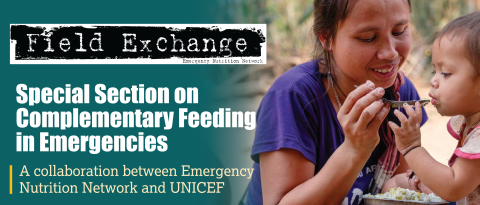Training in the time of COVID
Andrew Seal is an Associate Professor in International Nutrition at University College London
Carla El Mallah is a PhD candidate in Biomedical Sciences/Nutrition at the American University of Beirut and NIE course organiser
Omar Obeid is a Professor of Nutrition at the American University of Beirut
The Nutrition in Emergencies (NIE) Regional Training Initiative started in 2009 and, with initial funding from the Office of United States Foreign Disaster Assistance, established NIE training courses at the American University of Beirut (AUB) in Lebanon, the Asian Disaster Preparedness Centre (ADPC) in Thailand and the University of Makerere in Uganda. A one-off course was also run in Japan in 2017 in collaboration with the Network for Action against Malnutrition. The initial set up of the courses and their evaluation were described in a Field Exchange article back in 2012.1
The aim of the initiative was to establish high quality training courses that could be sustained when donor funding for staff development – which is typically rare, short term and unpredictable – became unavailable. To achieve this, host institutions planned to recoup their costs by charging fees to participants which, in both Lebanon and Thailand, was successful. Following the end of project funding, a further 12 courses were run by AUB and ADPC over the next eight years with more than 260 participants completing the face-to-face training. The COVID-19 pandemic then arrived and although no courses were run in 2020, in 2021 AUB decided to adapt and run the complete course in an online format.
The AUB corporate Cisco WebEx platform was used to run the course with individual accounts created for participants attending the course. Lectures and computer practical sessions were relatively easy to move online. Participants could engage with the presenter online and break out ‘rooms’ were used for group work and discussions. By far the biggest challenge was to adapt the day-long simulation to the online format. While WebEx could be used to create different virtual offices and some common meeting spaces such as an airport, coffee shop, camp, meeting room, etc., the role playing of characters felt much harder and the numerous person-to-person interactions that bring the usual exercise to life were hindered. Thirteen participants from six countries (Lebanon, Palestine, Saudi Arabia, Algeria, Somalia and the USA) took part in the course with all successfully completing it.
The success of this novel format, considering both the pandemic and the broader localisation agenda, raises the question of whether online remote disaster management can be the ‘new normal’. Feedback from participants was positive and, overall, it was felt that the movement to the online platform did not compromise the quality of the training. Arguably, online simulations do capture some aspects of training better than a face-to-face experience. Also, the virtual format of the course provides the opportunity for people with limited availability to benefit from the training.
Moving forward, online training can provide opportunities to carry out human resource development at a lower cost with greater flexibility and with a reduced carbon footprint – as required under commitment two of the Climate Change Charter2. However, format changes must be balanced against the advantages of face-to-face training and the unique learning and development opportunities that this can provide. Taken together, we believe that this calls for a blended and flexible approach to augment learning in an uncertain world.
2 COMMITMENT 2: Maximize the environmental sustainability of our work and rapidly reduce our greenhouse gas emissions https://www.climate-charter.org/


